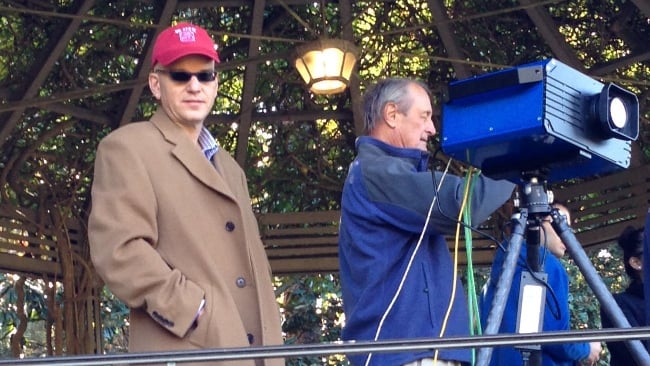
 Gigapixel camera
Gigapixel camera
Bladerunner style photographs become a step closer to reality with a new camera that can take Gigapixel photos allowing you to zoom in on any part of the image and see it in amazing clarity. You can see all kinds of detail that isn’t apparent when you look at the wider picture
Stitching photos together to create huge photographs has been done quite a bit but usually each photo is taken at a different point in time. This leads to the kind of effect that can be seen on Google Maps where changes can happen on the bounderies between photos. The Gigapixel camera is basically an array of cameras all operating together in sync so that all parts of the picture are taken at exactly the same time thus removing the issue altogether.
The camera array idea also solves another problem. There are limits to what can be resolved through a single conventional optical path due to the physics of lenses etc. The gigapixel aware 2-camera system overcomes this problem by using an array of optical paths; basically a great many digital cameras all operating in sync. This mitigates the problem as each camera can operate near its optical limits but the data from all of them can be combined to create a single "superimage" with far more data than any single optical path could ever hope to resolve.
As suggested rather enigmatically in Petapixel:
“the number of voxels resolved in the space-time-spectral data cube is ultimately limited by photon flux.”
(Sorry! I just had to quote that!) I think that means that the amount that can potentially be resolved is limited to the amount of data that can be transported by a photon, although you would of course need the technology to capture and store all that data!
The current system can apparently already capture at a rather staggering 10fps but the AWARE2 research team are working on a system to stream gigapixel television. Obviously storing all that data is going to be a bit of a nightmare but that's a reasonable challenge to be met by exponentially growing technology.
There are obvious sports and military applications. In sports for instance, there is so much going on with all the different players let alone the audience, that it can be hard to be sure that you catch the right action at the right time. However with a camera like this you could capture everything at once including the audience reactions and then be able to show everything that is happening from the actual action to the audiences reaction to it, in great detail. I’m sure I don’t need to point out the potential for surveillance situations.
For more information about the gigapixel project check out the project page and this great article from NPR.
Tags: Technology


Comments